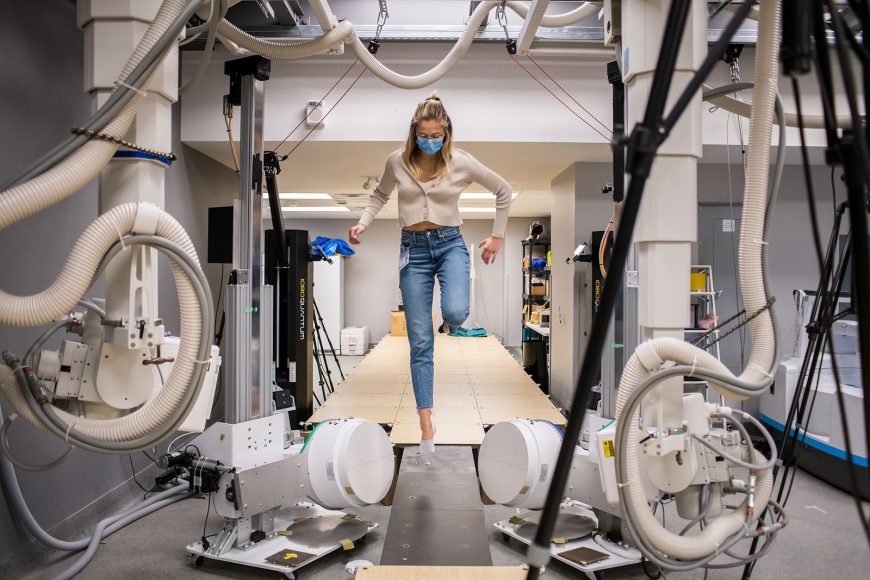Skeletal Observation Laboratory
When everything is working properly, humans can perform high-demand activities of daily living for more than 100 years. This rarely happens. One of the greatest barriers to realizing this potential is pathology of the musculoskeletal system. Joints are critical elements for enabling complex movements between segments, and they are remarkable in their ability to facilitate motion while transmitting forces; however, changes due to disease and injury interfere with mechanical function. Clinical interventions aim to alter joint mechanics; however, a lack of information on how healthy joints function during dynamic loading and whether interventions effectively alter joint mechanics as intended limit the ability to optimize treatments.
The purpose of this work is to use biplanar videoradiography to directly measure a person’s specific anatomy in motion while they perform high-demand activities. Precise information describing the motion of the skeletal system coupled with full-body musculoskeletal modeling approaches may provide insights into joint function and health.
For more information go to https://skeletalobservationlaboratory.com/
Human Mobility Research Laboratory
Work in the Human Mobility Research Centre’s (HMRC) state-of the-art facility involves unique methods to measure the mechanical factors of joint loading, orientation, and neuromuscular function during activities of daily living, as well as high-demand recreational and occupational tasks.
The research has produced transformative assistive technologies, including energy-returning prosthetic feet, end-user-designed rehabilitative devices, and energy-harvesting backpacks. With the emergence of biosensors and integration algorithms, the group is rapidly moving biomechanical and bioengineering research from the lab into real-world environments and biomedical research into hospitals and communities.
Bio-Mechatronics and Robotics Laboratory
To fully understand the interactions between a user and an external device, a multidisciplinary approach, including modeling/simulation, design optimization, and human experiments, is required. Bio-Mechatronics and Robotics Laboratory (BMRL) uses these strategies in designing biomechanical energy harvesters and exoskeletons, studying load carriage, and developing inertial sensor-based algorithms for human movement analysis.


